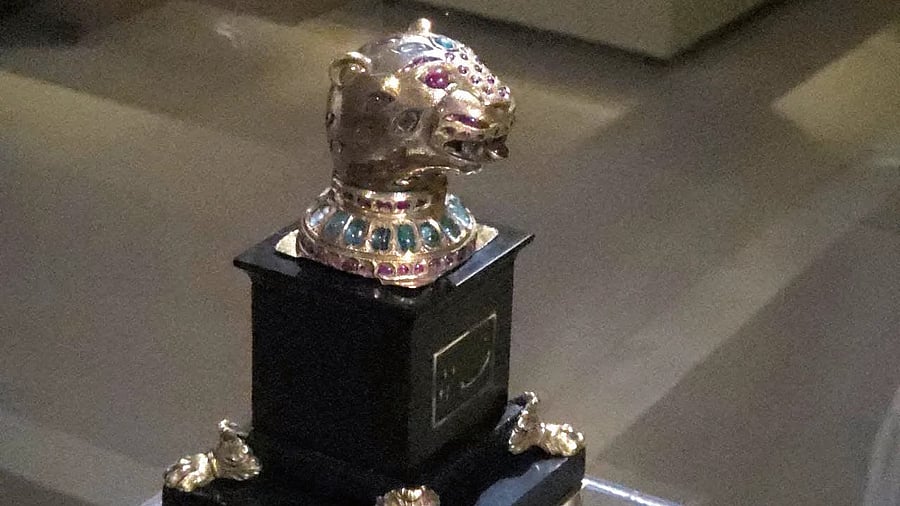
Credit: Special Arrangement
A museum in Malaysia is hosting an exhibition on Hyder Ali and his son Tipu Sultan, the 18th-century rulers of Mysuru known for their military innovations and fierce resistance to British expansion.
Titled ‘More Than A Day As A Tiger’, the show will run at the Islamic Arts Museum Malaysia, Kuala Lumpur, until March 2026. Much of it focuses on Tipu, who was known as the ‘Tiger of Mysore’. Fittingly, tiger motifs dominate the displays. The distinctive S-shaped bubri (tiger stripe) pattern appears across his weaponry and regalia, from gun barrels and bronze cannons to quilted helmets and war banners.
Bengaluru-based architect Mansoor Ali, who visited the exhibition last month, said the artefacts are far more numerous and better preserved than those at Tipu Sultan’s summer palace in the city. Ali, who conducts heritage walks titled ‘Bengaluru By Foot’, described the cannons, helmets, pistols, guns, and even window jaalis from Tipu’s palace as examples of “exquisite craftsmanship”. He also saw letters exchanged between Tipu and East India Company generals before and after his defeat. In one, Lord Cornwallis praised Tipu as “a man of great ability”. Ali noted that after Tipu’s fall, his riches and weaponry were looted by the British and shipped to Britain.
Yelahanka-based historian Nidhin Olikara, who also flew in for the show, deems it the largest Tipu collection outside the UK. Two exhibits stood out for him. One is a flintlock sporting gun that can fire two shots without reloading — “It’s proof of Mysuru’s artisanship”. Another one is a pata (gauntlet sword) inscribed with the names of Nanjaraja, a Wodeyar minister, and Hyder Ali, whom he mentored.
In an email, museum’s senior curator Zulkifli Ishak highlighted the flintlock sporting gun along with Tipu’s bedchamber sword as prized attractions. The museum website also notes that after Tipu’s fall, his magnificent gold throne was dismantled for its jewels and plundered. On display is one of the rare gem-studded gold finials that survived.
Other highlights include a kaftan and headdress from Tipu’s court, still bearing battle scars, as well as paintings depicting the storming of his island capital Srirangapatna and the surrender of his two sons to the British.